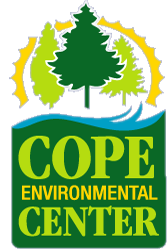PECTINOPHORA GOSSYPIELLA PDF MERGE >> READ ONLINE
The Pink Bollworm, (Pectinophora gossypiella), is considered possibly the most destructive pest on cotton worldwide. It is native to Asia and has been reported in several states in the Southwest. The Pink Bollworm prefers cotton but will also feed on Okra, Kenaf, and Hibiscus. Monitoring of Arizona pink bollworm (PBW), Pectinophora gossypiella, susceptibility to Bt toxin Cry1Ac has been conducted annually since 1997. PBW were collected from cotton fields located throughout the Southwest in 2002, cultured in the laboratory, and tested for susceptibility to Cry1Ac using diet-incorporation bioassays. A total of 13 Pectinophora gossypiella (Saunders). Taxonomic placing: Insecta, Holometabola, Lepidoptera, Gelechiidae.. Common name: Pink bollworm. Geographical distribution: The pink bollworm is of south-Asian origin, and has spread to all regions where cotton is cultivated (CIE Map #13, 1990 revised).. Host plants: Cotton and other members of the family Malvaceae, especially Hibiscus spp. 4 John Goolsby and Ryan Zonneveld surveyed the Kimberley and Darwin Region during the monsoon season. Pectinophora gossypiella populations peak during this time as many of the wild host plants are flowering. In Kununurra, WA we collected hundreds of P. gossypiella from cotton being grown through the summer as a green mulch. The GM insects tested in the field so far are intended for sterile insect release programs against a major pest of cotton (pink bollworm, Pectinophora gossypiella) in the United States and against Aedes aegypti, the mosquito vector of dengue fever, in the Cayman Islands , Malaysia , and Brazil . In the pink bollworm release, the GM insects were The rate of development of the larval and pupal stages of 4 strains of the pink bollworm, Pectinophora gossypiella (Saunders) (Lep.: Gelechiidae), were compared at constant temperatures from 16.7° to 38°C. Two of the strains carried the dominant autosomal mutation, sooty (S); the other 2 were wild-type. The Pectinophora gossypiella IPM project in California, USA, was reviewed by Walters et al. (1998). The project used the release of sterile insects, cultural controls, intensive monitoring with pheromone baited traps for adult males and boll sampling, pheromone applications for mating disruption, very limited use of pesticides and the Control of pink bollworm, Pectinophora gossypiella with Bacillus thuringiensis in cotton fields Keywords: Pectinophora gossypiella, pink bollworm, insecticides, mortality percentage. Introduction Cotton is the most important crop of Pakistan, cultivated on 2917 thousands hectares and is the source of large amount of foreign exchange, contributing about 5.2% of value added in agriculture and about 1.0 percent of GDP and The pink bollworm, Pectinophora gossypiella (Saunders) (Lepidoptera: Gelechiidae), a cotton pest probably native to Indo?Pakistan, invaded China at the beginning of the 20th century. Chinese P. gossypiella have been assumed to be the result of indiscriminate introductions from Pakistan and America by transport of cotton seed. SOME LEPIDOPTERA LIKELY TO BE CONFUSED WITH THE PINK BOLLWORM Pectinophora gossypiella Busck, 1917, in Jour. Agr. Research, v. 9, 1921 Lepidoptera Likely to be Confused with Pink Bollwonn 809 On the ninth abdominal segment (Aix) the paired dorsal setoe II not on a single SOME LEPIDOPTERA LIKELY TO BE CONFUSED WITH THE PINK BOLLWORM Pectinophora gossypiella Busck, 1917, in Jour. Agr. Resea
Comment
© 2024 Created by G1013.
Powered by
![]()


You need to be a member of generation g to add comments!
Join generation g